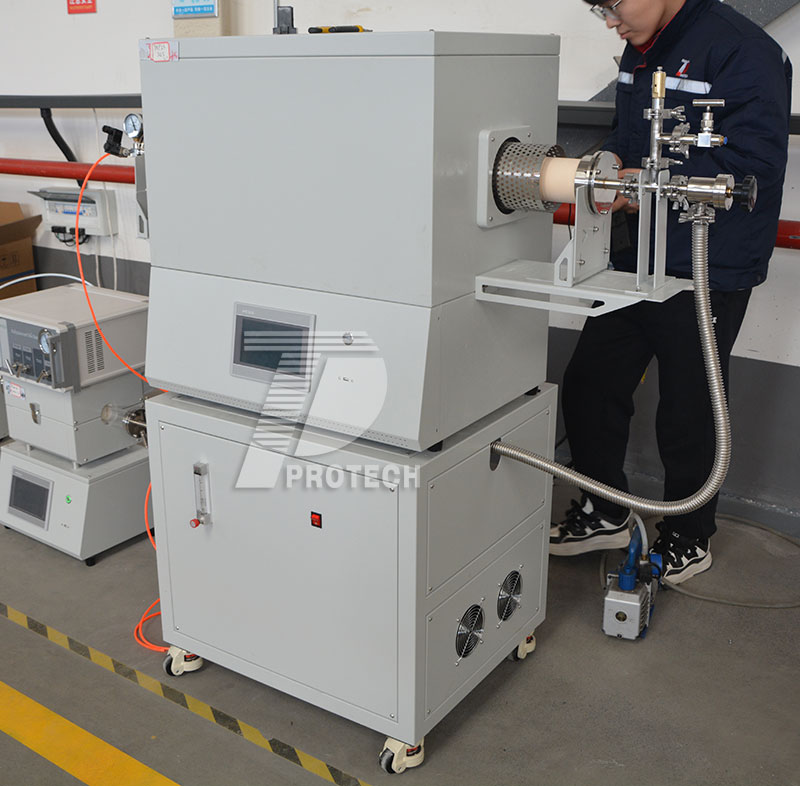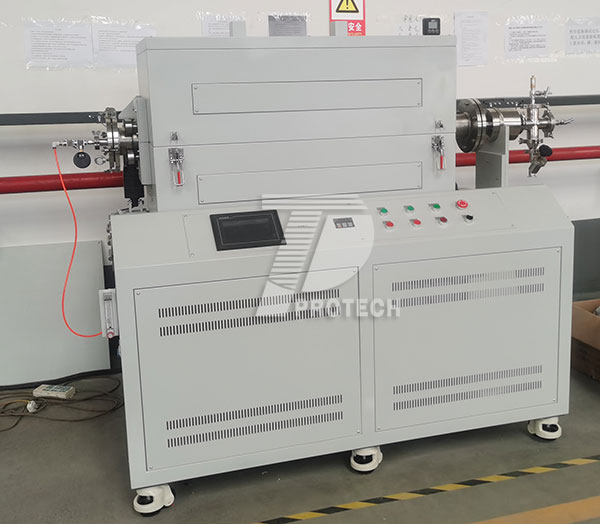


NEWS
When choosing a gas tube furnace, multiple key factors need to be considered to ensure that the selected equipment can meet the specific needs of experiments or production. Let's take a detailed look at the precautions below!

Corundum tube gas tube furnace (click on the picture to view product details)
1. Clear usage requirements
Firstly, it is necessary to clarify the specific scenarios and purposes of using gas tube furnaces, such as material heat treatment, metal annealing, powder processing, or coating uniformity. Different application scenarios may have different requirements for the functionality, temperature range, and atmosphere control of the furnace.
2. Temperature range and heating element
Temperature range: Select a suitable tube furnace based on the high temperature range required for experiments or production. The temperature range can range from several hundred degrees Celsius to two thousand degrees Celsius.
Heating element:
Below 1200 ℃: Molybdenum containing resistance wire heating elements are usually used.
1300~1600 ℃: Silicon carbide (SiC) heating elements can be selected.
1600~1800 ℃: MoSi2 heating element is required.
3. Furnace tube and crucible material
Furnace tube material:
Quartz tube: suitable for scenarios where the furnace temperature is ≤ 1200 ℃.
Corundum tube or alumina tube: capable of withstanding high temperatures up to 1700 ℃ in the furnace.
High temperature alloy tube: suitable for temperature changes between 900~1000 ℃.
Crucible material:
Quartz crucible: suitable for situations where the furnace temperature is ≤ 1200 ℃.
Corundum crucible: suitable for situations where the furnace temperature is ≤ 1700 ℃.
4. Heating zone length and constant temperature zone
Heating zone length: It should be long enough to cover the entire sample and ensure uniform heating. A longer heating zone can provide a more uniform temperature field, suitable for experiments and production processes that require high temperature uniformity.
Constant temperature zone: The constant temperature zone is always shorter than the total heating zone, so choosing a heating furnace with a longer constant temperature zone than the sample is a safer approach.
5. Atmosphere control and gas handling capability
Atmosphere control: Many experiments and production processes require specific atmosphere conditions, so it is important to choose a tube furnace with good atmosphere control capabilities. Common atmosphere control functions include vacuum, inert gas protection, etc.
Gas processing capability: If it is necessary to process hydrogen gas or conduct high-temperature corrosion research, a special model with corresponding gas processing capability should be selected.
6. Temperature control accuracy and safety performance
Temperature control accuracy: A high-precision temperature control system can ensure temperature stability during experiments or production processes, improving the reliability and reproducibility of experimental results.
Safety performance: A good tube furnace should have comprehensive safety protection functions, such as over temperature alarm, leakage protection, emergency shutdown, etc., to ensure the safety of operators and equipment.

Rotating tilting tube furnace that can pass gas (click on the image to view product details)
7. Other considerations
Equipment size and layout: Choose the appropriate size and layout of the tube furnace based on the space size of the laboratory or production workshop.
After sales service and maintenance: Consider the quality of after-sales service provided by equipment suppliers and the convenience of equipment maintenance to ensure timely technical support and maintenance services during use.
In general, when choosing a gas tube furnace, it is necessary to comprehensively consider multiple aspects such as usage requirements, temperature range and heating elements, furnace tube and crucible materials, heating zone length and constant temperature zone, atmosphere control and gas processing capabilities, temperature control accuracy and safety performance, as well as equipment size and after-sales service. By comprehensively evaluating these factors, a gas tube furnace that meets specific needs can be selected.Click to learn more tube furnaces! Or click on online customer service to learn more about product information!
Leave A Message